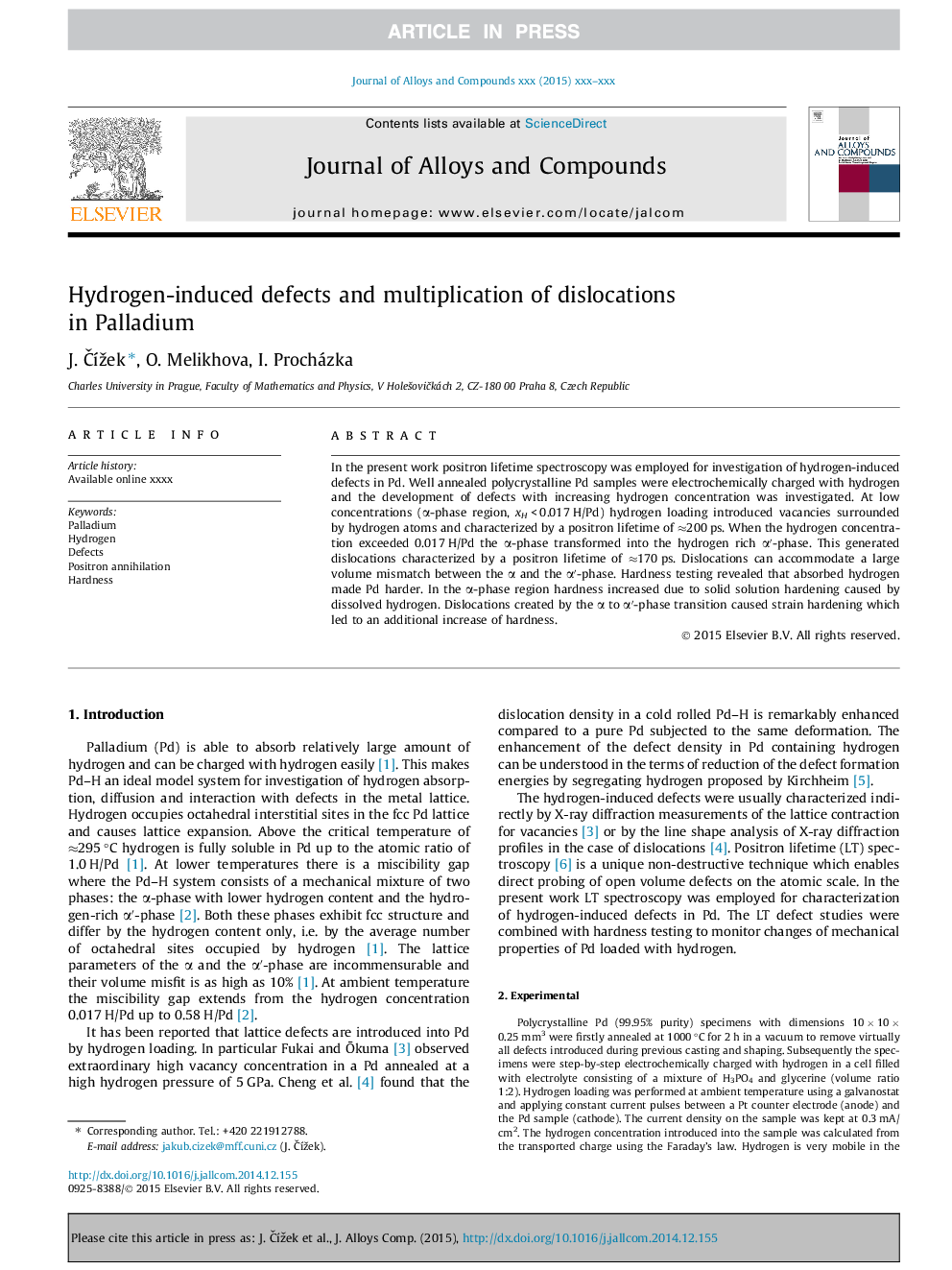| Article ID | Journal | Published Year | Pages | File Type |
|---|---|---|---|---|
| 1608773 | Journal of Alloys and Compounds | 2015 | 4 Pages |
Abstract
In the present work positron lifetime spectroscopy was employed for investigation of hydrogen-induced defects in Pd. Well annealed polycrystalline Pd samples were electrochemically charged with hydrogen and the development of defects with increasing hydrogen concentration was investigated. At low concentrations (α-phase region, xH < 0.017 H/Pd) hydrogen loading introduced vacancies surrounded by hydrogen atoms and characterized by a positron lifetime of â200 ps. When the hydrogen concentration exceeded 0.017 H/Pd the α-phase transformed into the hydrogen rich αâ²-phase. This generated dislocations characterized by a positron lifetime of â170 ps. Dislocations can accommodate a large volume mismatch between the α and the αâ²-phase. Hardness testing revealed that absorbed hydrogen made Pd harder. In the α-phase region hardness increased due to solid solution hardening caused by dissolved hydrogen. Dislocations created by the α to αâ²-phase transition caused strain hardening which led to an additional increase of hardness.
Related Topics
Physical Sciences and Engineering
Materials Science
Metals and Alloys
Authors
J. ÄÞek, O. Melikhova, I. Procházka,
